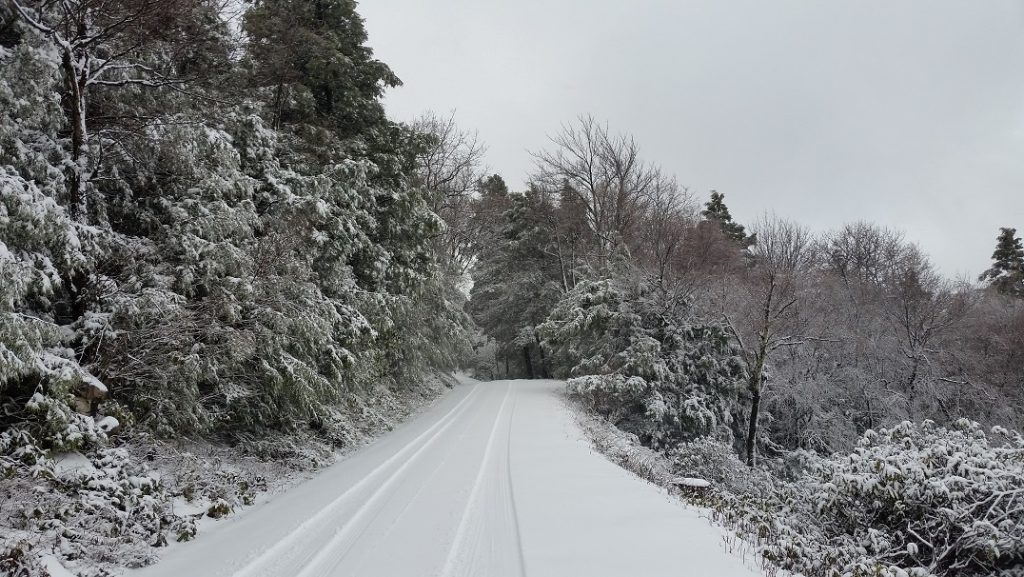This winter has been different – more mud and rain than snow and ice. But a record was broken nonetheless. We’ve talked about harvest and survival rates over the past 17 years. But as Ms. Jackson would ask, what have you done for me lately? Ok, so let’s talk about the latest study, The Deer-Forest Study, and buck harvest and survival rates.
To estimate harvest rates we use data from both our radio-collared deer and deer that are fitted with reward ear tags.
Our blog readers are pretty sharp, so I know you are wondering how we know what happens to those ear tagged deer if we can’t follow them. It is a 2-fold issue:
- We never really know their fates of ear tagged only deer (except when harvested and hunters call to claim the reward) – occasionally we recover road-killed deer but if they die back in the woods we may never know what happened to them.
- Deer captured in January-April may not survive to the hunting season. How do we account for deer that might die beforehand?
The solution to these problems is rather complicated. So complicated that a Franny Buderman received a master’s degree by developing the estimation method to do this. Basically our sample of radio-collared deer tells us how many deer survive between tagging and recovery (the survival rate outside the hunting season).
So that’s where we’ll start. When we capture a deer in January, what’s the probability it will be available to be harvested by a hunter when hunting season arrives?
It turns out monthly survival is very high and consistent. Over the past 4 years, the probability of an adult deer (male or female!) surviving each month (January through September) was 99.46%. And we’re pretty confident in our estimate because the standard error (a measure of precision) was only 0.16%.
So if the monthly survival rate is 99.46%, the January-September survival rate is 95.2% (multiply 0.9946 by itself 9 times). If a deer is alive in January, it’s probably going to be alive come hunting season.
So what about harvest rates? Well, if the non-hunting survival rates were that high maybe you can guess from the title of this post.
Harvest rates of antlered deer were
- 9.3% on Bald Eagle and Rothrock state forests (in WMU 4D)
- 13.3% on the Susquehannock State Forest (in WMU 2G)
That’s right, about 1 in 10 were harvested each year. Comparing these to all our other studies here’s where they rank. A new record low!

Also, we couldn’t detect a difference in harvest rates between 1.5-year-old males and males that were >2.5-years-old. With antler point restrictions, subadult harvest rates are always lower than adult harvest rates because about half of them are protected and not legal for harvest.
Seeing no difference between these age classes is not unexpected given the overall low harvest rates. Over the past 4 years we recorded 6 direct recoveries* of 60 subadults available for harvest, and 9 of 57 adults available for harvest. Slightly fewer harvests for subadults, as expected, but statistically the difference is not significant.
*[a ‘direct recovery’ is a deer harvested the same year it was tagged, a recovery 1 or more years after tagging is called an ‘indirect recovery’]
What’s the bottom line? There are some really nice bucks on our study areas. The probability of a buck that survives the hunting season as a fawn and subadult will make it to his 7th hunting season is 1 in 3. In fact, we are currently following a number of bucks that are at least 4 years old.
We expect bucks on our study areas to have about a 1 in 10 chance of surviving to 10 years old. Old men for sure!
It’s why we get pictures of bucks that look like this…
Susquehannock State Forest

Bald Eagle State Forest

Rothrock State Forest

-Duane Diefenbach
If you would like to receive email alerts of new blog posts, subscribe here.
And Follow us on Twitter @WTDresearch
